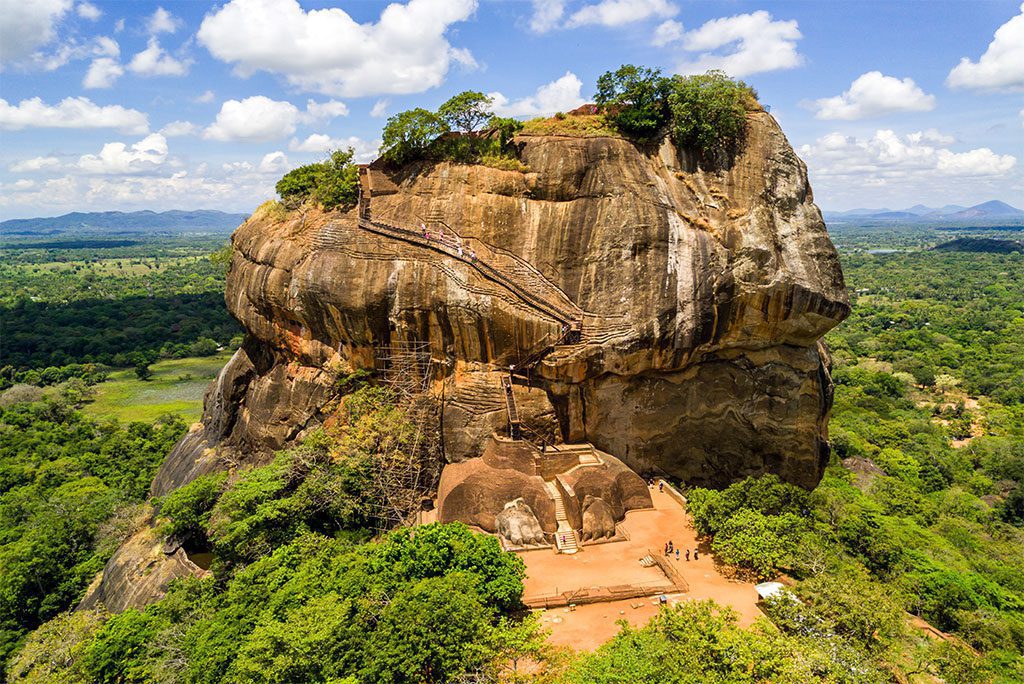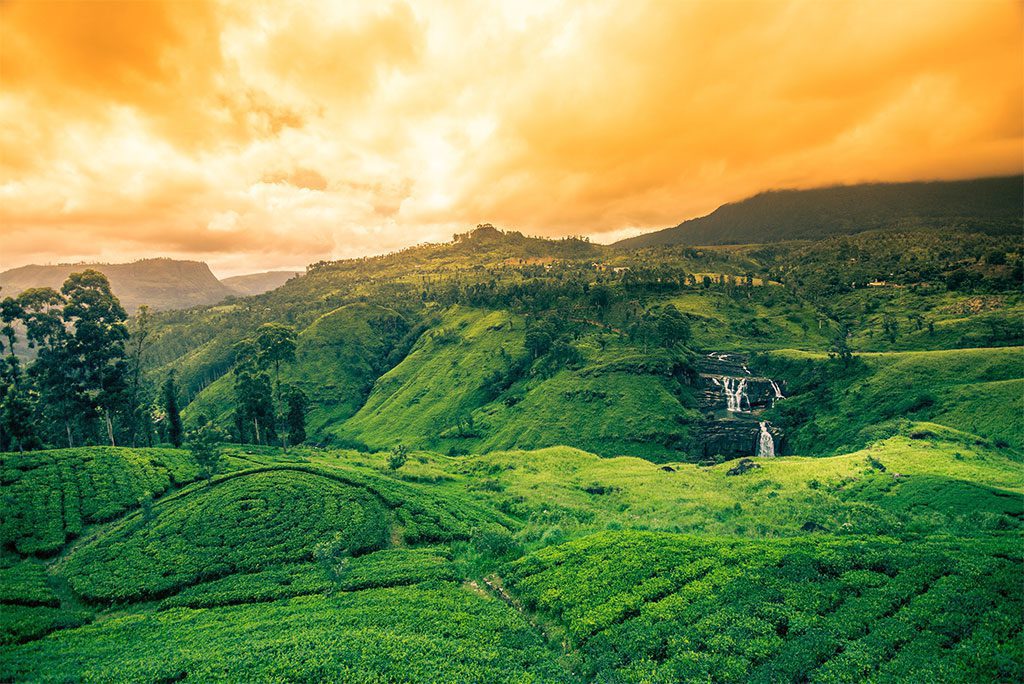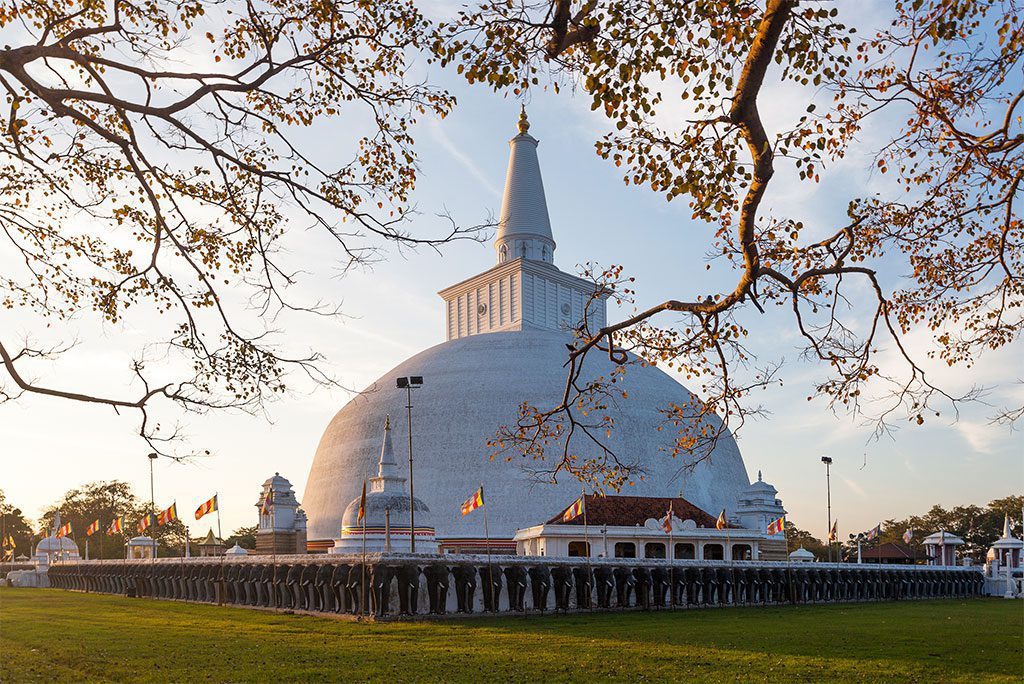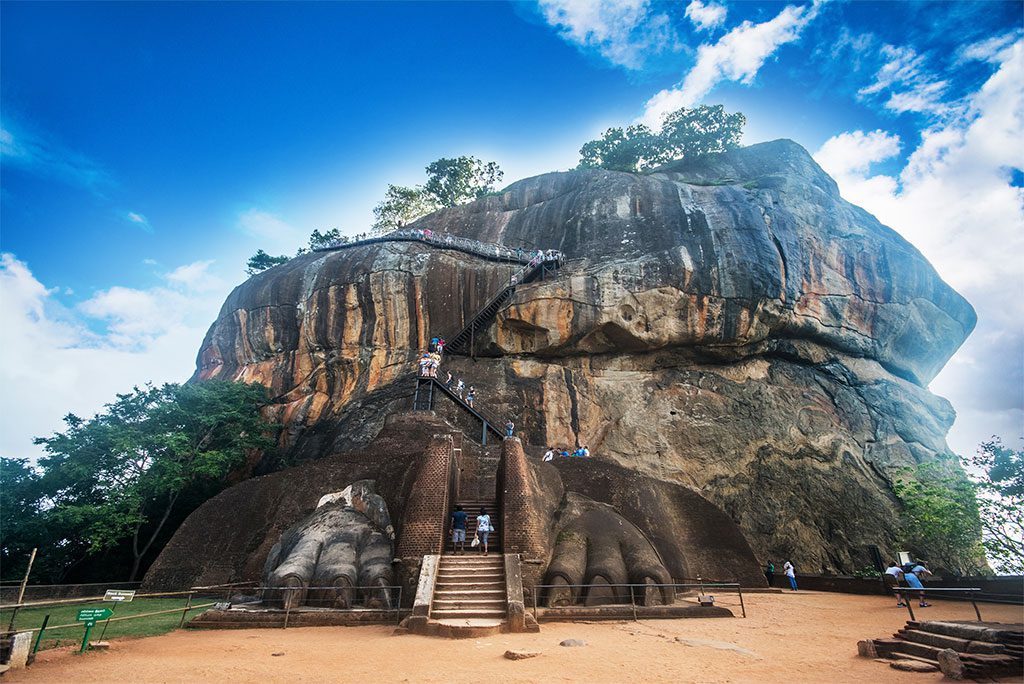The only thing small about Sri Lanka is its size. It is a tiny island in the Indian Ocean. Sri Lanka, which used to be called Ceylon, is an island country with a long cultural history, beautiful beaches with swaying coconut palms, rough mountains, and thriving rubber and tea plantations.
Colonial buildings from the times when the Portuguese, Dutch, and English occupied the island may be seen throughout your travels. At a wildlife refuge, you may even see a leopard or two, in addition to the many elephants you’ll see at the many local festivals. Outlined below are some of Sri Lanka’s most notable attractions:
10. Bentota
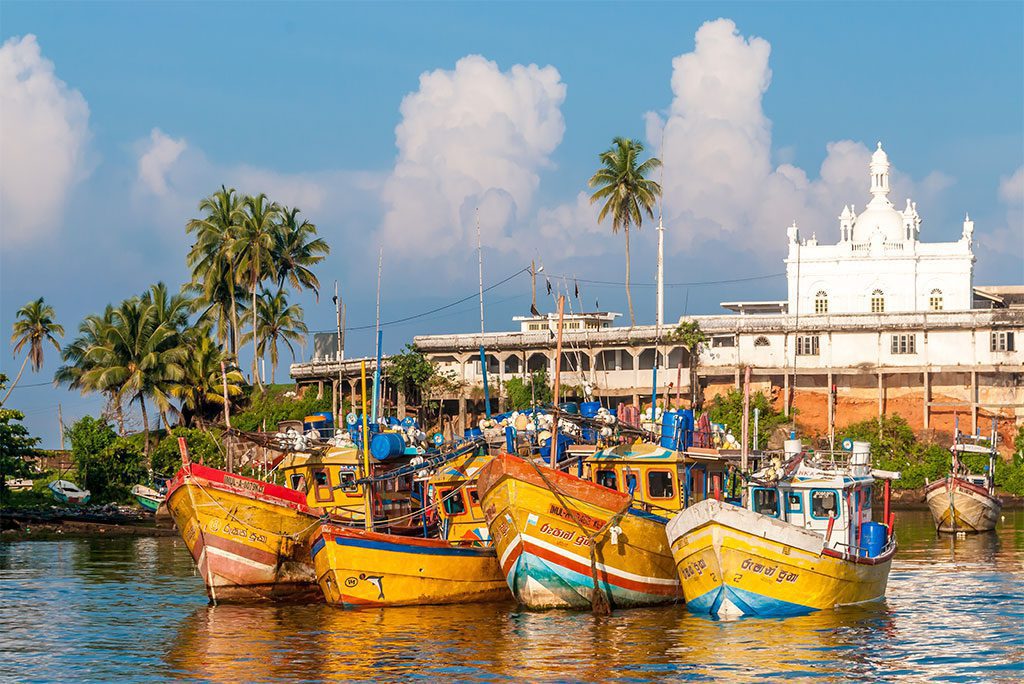
Indulge in the tranquil beauty of Bentota’s sandy shores. Image source: milosk50/Shutterstock.com
Bentota, located on the southern coast of Sri Lanka, is a bustling tourist town known for its waving coconut trees. Bentota, Sri Lanka, is a famous beach because it is a resort town on the Indian Ocean and because it is a great place to go surfing, sailing, and snorkelling.
For a change of pace, you may go to a sea turtle hatchery and conservation facility, which keeps tabs on five of the seven kinds of sea turtles on the globe. There are also beautiful gardens and a Buddhist temple from the Middle Ages to explore.
9. Nuwara Eliya
The tea that is produced in Sri Lanka is world-famous. Seeing as how Nuwara Eliya is where tea was originally grown, it is the ideal location to educate oneself on the subject. Nuwara Eliya is the centre of Sri Lanka’s tea industry due to its ideal temperature and high altitude (1,900 metres/6,100 ft).
Visit a tea farm to learn about the whole process, from planting to drinking. This settlement in the hills earned the moniker “Little England” after becoming a haven for British colonists in the nineteenth century.
Tourists rush to Sri Lanka in April to celebrate the new year and admire the blooming flowers. Two other places worth seeing are Lake Gregory and the Laxapana Waterfalls, two of Sri Lanka’s most popular tourist attractions.
8. Anuradhapura
An old holy city, Anuradhapura, was founded around a fig tree cutting from Buddha’s original tree. In the third century BC, the first leader of a Buddhist nunnery founded Anuradhapura.
An invasion in the late 10th century led to the abandonment of this beautiful metropolis, which had existed for 1,300 years. It was known to the indigenous, but not many others, until it was “discovered” by Europeans several centuries later, like Machu Picchu in Peru. Now that they’ve been uncovered, the public may marvel at these spectacular ruins.
7. Colombo
Since before the year 2000, when its enormous natural port made it popular with ancient commerce from Italy to China, Colombo has been Sri Lanka’s commercial hub. Although the country’s legislative capital is in another city, it is often referred to as the capital.
Colombo, once under Portuguese and later British colonial rule, is now a bustling city that attracts many visitors. Galle Face Green, a narrow park bordering the Indian Ocean, is a popular tourist destination. The Gangaramaya Temple is another must-see because of the variety of cultural influences seen in its design.
6. Yala National Park
Yala National Park is a wildlife refuge around 240 km (150 miles) from Colombo, and the animals there dominate the roost, the ground, and the sky. There’s a whole lot to do in Yala. Elephants, water buffalo, and leopards may all be seen on your first safari of the day. In September, the park will be closed due to leopard breeding.
There are 215 different bird species here, including seven that are exclusive to the area. Aside from the wildlife, the ancient rock temple of Sithulpauwwa, which used to be home to 12,000 monks, and the royal wedding site at Magul Maha Viharaya are also popular places to visit.
5. Mirissa
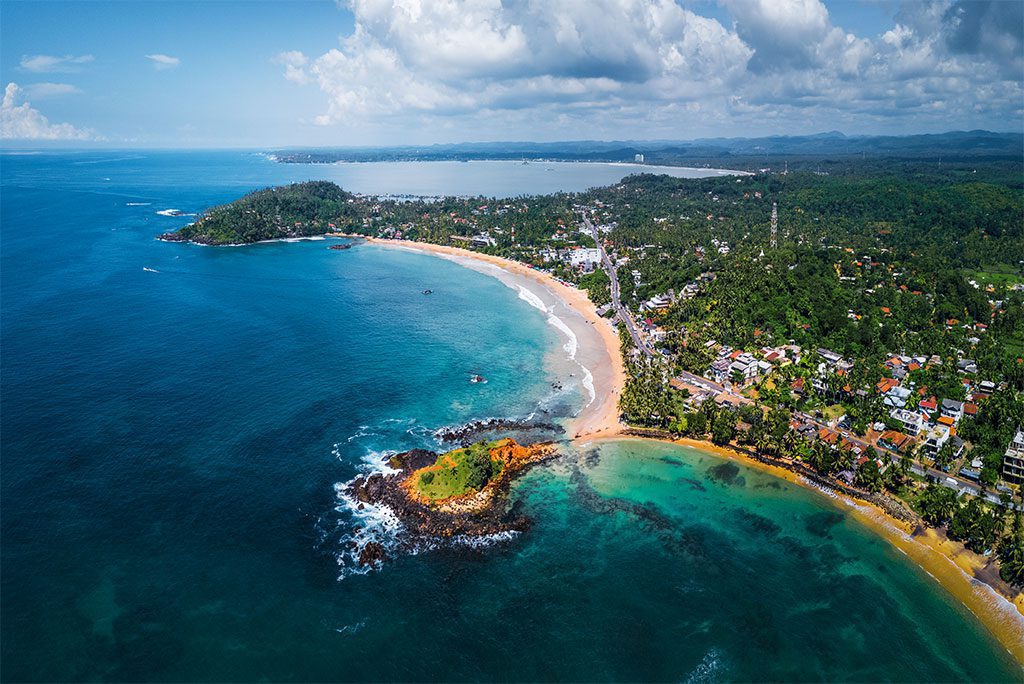
Immerse yourself in the breathtaking beauty of Mirissa’s tropical beach. Image source: Dudarev Mikhail/Shutterstock.com
A tropical paradise like Mirissa, with its swaying palm trees, gorgeous golden sand beaches, and lazy days spent relaxing in a hammock, may be the ideal vacation spot for you. Absolutely nothing could top this.
The crescent-shaped paradise is renowned across Sri Lanka for its breathtaking sunrises and sunsets. During the day, you may have the beach to yourself without having to worry about noisy tourists or obtrusive hotels. Generally speaking, things heat up after dark. To see dolphins and whales, go to Mirissa, the main fishing port on the southern coast.
4. Polonnaruwa
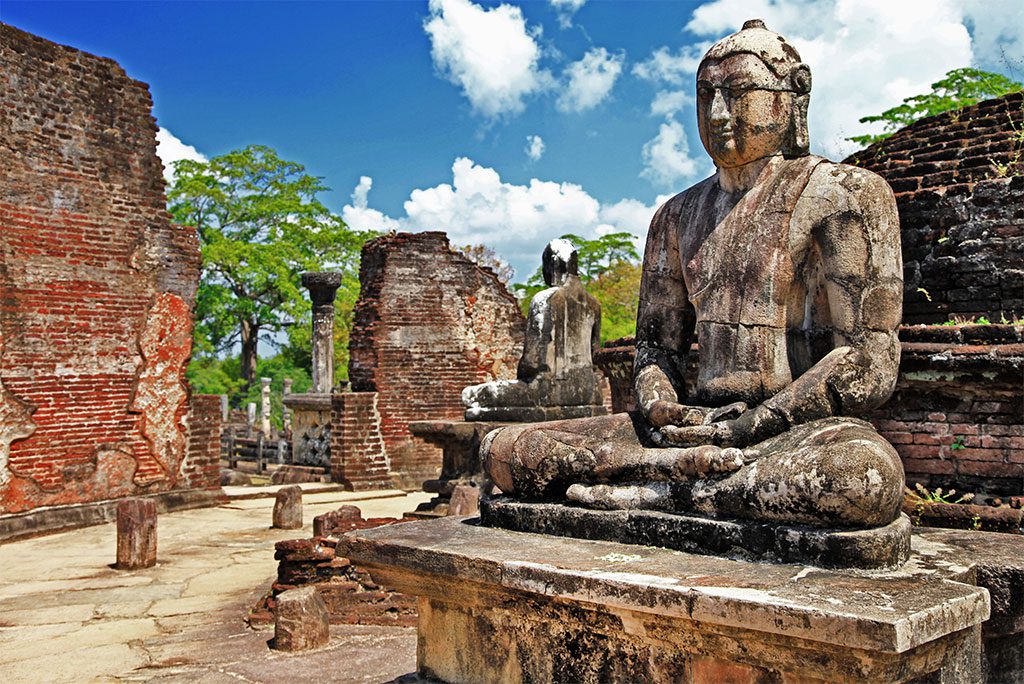
Discover the ancient allure of Polonnaruwa’s Buddha statue. Image source: leoks/Shutterstock.com
In most cases, “beauty” and “beast” are complementary opposites; but, in the case of Polonnaruwa, “beautiful” is more appropriately paired with “ruins.” A lot of people come to see what’s left of the ancient garden city of Polonnaruwa, which was the second oldest kingdom in Sri Lanka.
Some of the finest surviving ruins from the 12th century in the nation may be found here. Exotic product merchants and devotees of the city’s various temples mixed freely in Polonnaruwa.
Visit the Archaeological Museum to get your bearings before heading to the Royal Palace, Polonnaruwa’s most famous attraction and one of the 50 structures that make up the complex. The Sacred Quadrangle, with its exquisite decoration, is another must-see.
3. Kandy
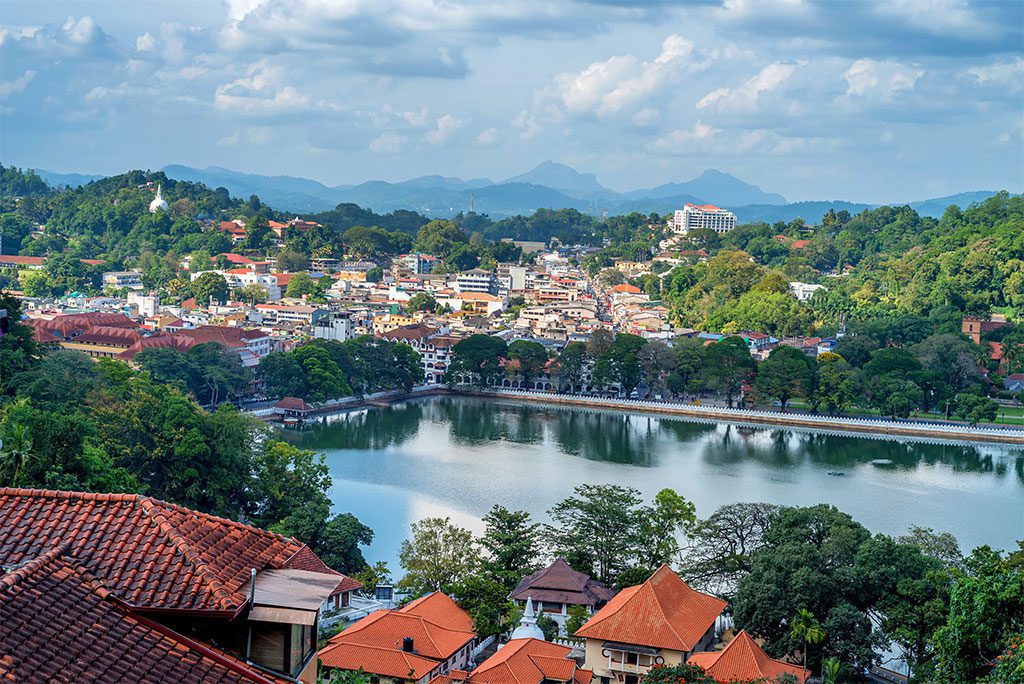
Lose yourself in the mesmerizing view of Kandy. Image source: Yakov Oskanov/Shutterstock.com
The Central Highlands, where tea and rubber are grown in the tropical plantations, may be reached from Kandy, the second biggest city in Sri Lanka. From Colombo, you may take a picturesque route through the country’s rubber fields.
Kandy, the last of the ancient capitals, is where you’ll find the Temple of the Tooth Relic, one of the holiest Buddhist sites in all of Sri Lanka. The process of parading the tooth relic across the city is celebrated with a large, vibrant event. If you’re a fan of “Indiana Jones and the Temple of Doom,” you may find this bit of trivia interesting: Kandy was a major setting in the film.
2. Galle
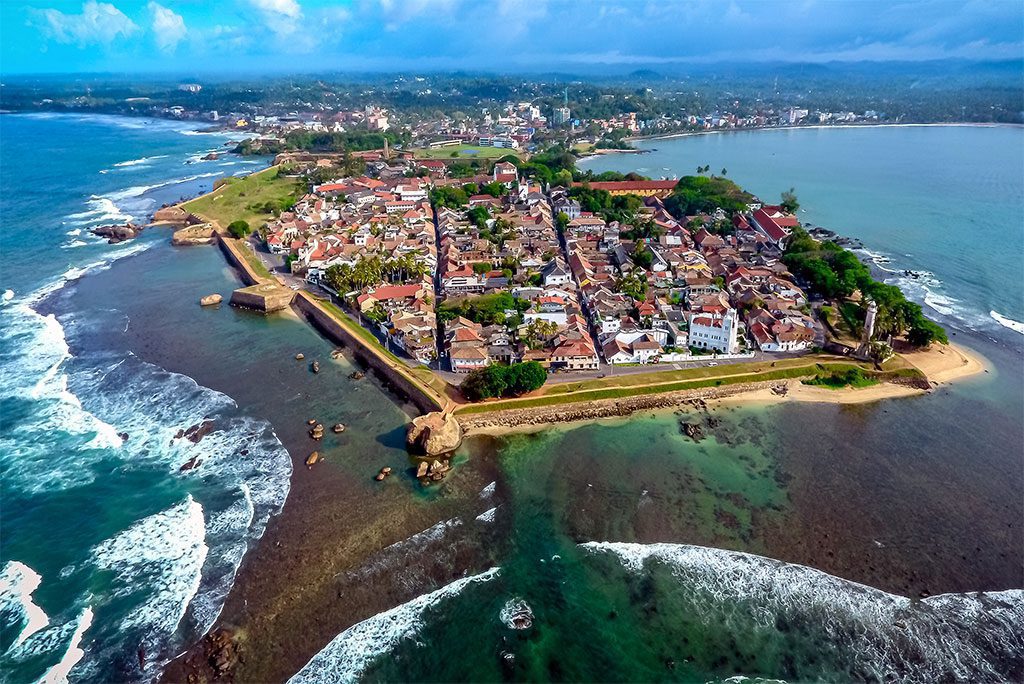
Marvel at the enchanting aerial view of Galle Fort. Image source: X_vini/Shutterstock.com
The Dutch colonists who established Galle in the 17th century constructed the city’s iconic fort. The fort’s unique design makes it stand out among other structures in its location on a peninsula facing the Indian Ocean. Galle is a model of a well-fortified city.
However, the stronghold is not only a scenic location; it is now home to functional institutions, including courts and commercial enterprises. About a third of the city’s residences are owned by foreigners, and Galle is becoming known as an artistic colony and expat enclave.
Besides the Jesuit-built St. Mary’s Cathedral and the Jesuit-built natural harbour, other prominent attractions include Sri Lanka’s oldest lighthouse, a maritime museum, a significant Shiva temple, and the Jesuit-built St.
1. Sigiriya
Sigiriya should be at the top of the schedule for any would-be archaeologists travelling to Sri Lanka. This historic metropolis rests on a plateau that is almost 180 metres (600 feet) in elevation and runs along the whole length of the city’s steep slope.
Overlooking the forests below, this pinnacle has earned the name Lion’s Rock. You may enter the site through the stairs or the chambers that branch off from the lion’s mouth. There are also gardens and fountains for your enjoyment. To put it mildly, that’s very sweet!
To the locals, it’s already the eighth wonder of the world. This rock castle was first used as a monastery in the third century BC. One day, it would become a palace for a king.


